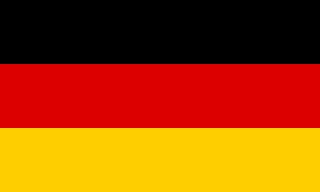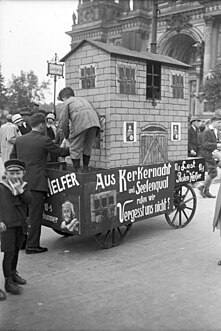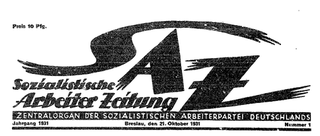Sozialistischer Schutzbund ('Socialist Protection League', abbreviated SSB) was a paramilitary formation in Weimar Germany, linked to the Socialist Workers' Party of Germany (SAPD). [1] SSB was active between 1931 and 1933. [1] The organization mainly acted as guards at election campaign meetings. [1] [2] SSB also guarded offices of the party and the Socialist Youth League of Germany. [3] The SSB wore a uniform with blue shirts, red armbands and dark blue caps. [4] SSB earned a degree of respect for its discipline. [5]
The Socialist Workers' Party of Germany was a centrist Marxist political party in Germany. It was formed by a left-wing party with around 20,000 members which split off from the SPD in the autumn of 1931. In 1931, the remnants of USPD merged into the party, and in 1932 some Communist Party dissenters joined the group too, as well as a part from the Communist Party Opposition. Nevertheless, its membership remained small. From 1933, the group's members worked illegally against National Socialism.
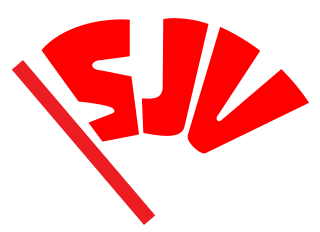
The Socialist Youth League of Germany was a youth organization in Germany. SJV was the youth wing of the Socialist Workers Party of Germany (SAPD). SJV was founded in 1931. The organization was banned after the National Socialist take-over 1933.
SSB was formed by members of the Reichsbanner Schwarz-Rot-Gold . [6] At the time of the founding of the organization, the SSB had some 100 members. SSB made its first public appearance in Zwickau on 8 November 1931. Some 500 SSB members paraded through the city. On 6 December 1931 a SSB march with 500 participants took place. [4]

The Reichsbanner Schwarz-Rot-Gold was an organization in Germany during the Weimar Republic, formed by members of the Social Democratic Party of Germany, the German Centre Party, and the (liberal) German Democratic Party in 1924. Its goal was to defend parliamentary democracy against internal subversion and extremism from the left and right, to teach the population to respect the new Republic, to honor its flag and the constitution. Its name is derived from the Flag of Germany adopted in 1919, the colors of which were associated with liberal parliamentary democracy and the republic, and themselves had first appeared together on a state flag, within a German-ethnicity sovereign state in 1778.

Zwickau is a town in Saxony, Germany, and the capital of the Zwickau district. It is situated in a valley at the foot of the Erzgebirge mountains, it is part of Central Germany and geographically linked to the urban areas of Leipzig-Halle, Dresden and Chemnitz, the town has approximately 100,000 inhabitants. From 1834 until 1952 Zwickau was the seat of the government of the south-western region of Saxony.
In 1932 the Communist Party of Germany (Opposition) (KPD(O)) dissident Karl Borromäus Frank joined SAPD, and was appointed as the national chief of SSB. Frank was expelled from the party later the same year. [2] [7]
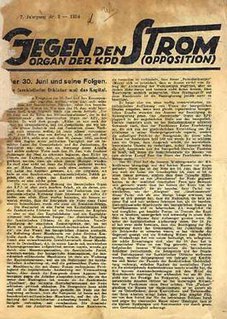
The Communist Party of Germany (Opposition) (German: Kommunistische Partei Deutschlands or KPD , generally abbreviated as KPO or KPD was a communist opposition organisation established at the end of 1928 and maintaining its existence until 1939 or 1940. After the rise of Adolf Hitler and the Nazi Party to power in January 1933, the KPO existed only as an illegal and underground organization. The group initially sought to modify, later to replace, the mainstream Communist Party of Germany headed by Ernst Thälmann. The KPO was the first national section affiliated to the International Communist Opposition.
